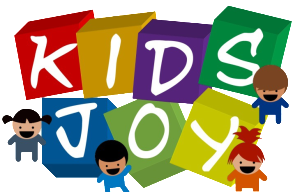Sometimes just getting your child to eat is the hugest task of your day – forget trying to get them to eat right! But its not impossible. The younger your child, the easier it is to get them to eat right. Don’t wait till they are teenagers to start teaching them about healthy eating – you’ve already lost the battle!
In today’s world of junk food and advertisements bombarding your children everywhere they turn, is it a lost cause? My answer from my own experience with my preschool children and lots of other mums who practice healthy eating patterns is No! There is still hope. As parents we have a huge influence over our children and their eating habits.
What a Preschooler should be eating
The latest in nutritive research is the concept of ‘My Plate’ which is a simple visual to help plan your pre-schoolers diet. Considering everything your child eats in the day, ideally 30% should be grains, 20% proteins, 40% vegetables, 10% fruits, and a small portion of dairy.

So what is included in these food groups?
- Grains: Rice, Dosa, Idli, Puttu, Poha, Ragi, Oats, Bread, etc.
- Protein: Meat, Fish, Eggs, Nuts, Soya, Dal, Rajma, Peas, etc.
- Vegetables: Spinach, Carrots, Cucumber, Tomato, Cauliflower, Cabbage, Broccoli, Pumpkin, etc.
- Fruits: Banana, Papaya, Mango, Apple, Strawberry, Pomegranate, Pineapple, etc.
- Dairy: Milk, Curd, Paneer, Cheese, etc.
This is what a daily food plan should include

Example of a Day’s Food Plan for a Preschooler
8am Breakfast: 2 dosas, 1 cup papaya
10:30am Snack: 1 glass of milk, 1 cup carrot and cucumber cut into sticks
1:00pm Lunch: ¾ cup cooked rice, ¼ cup spinach dal, 1 egg, ½ cup cauliflower and peas
4:00pm Snack: Bowl of curd with banana, dates and nuts
7:00pm Dinner: 2 chapattis, 2 pieces of chicken, ¼ cup french beans
How to help your child set good eating habits
- Talk to your child about the different food groups and make it a fun game where they have to find out which food goes into which group. Once they are excited about it, talk about the difference between healthy and junk food.
- Stop keeping junk food in your home. Always have healthy snack options available such as fruits, vegetables, nuts, etc.
- Initially you may have to take a little extra effort to make healthy food look attractive, such as arranging it in a fun way on the plate.

- Completely avoid aerated drinks, sweets, chocolates, fast food such as burgers, fries, pizzas, etc. These are very addictive and extremely unhealthy for your child’s body – it can almost be compared to giving your child a cigarette to smoke.
- Don’t use sweets and other unhealthy food as rewards (eg. “If you eat all your vegetable, you’ll get a lollipop”). By doing this, you are glorifying unhealthy food. You can give these to your child once in a way – but it should really be the exception.
- Don’t get fooled by packaged food in shops that claim to be healthy such as tetra pack fruit juices, chocos and other ‘fortified’ children’s cereals, bournvita, etc. These things are full of sugar and are not healthy for children. As far as possible eat fresh homemade food, such as homemade fruit juice, homemade cake, etc.
- Children should not be allowed to run around while eating, or put in front of the T.V. in order to eat. Set good meal time practices in your home. Eating food together as a family is a great way to bond. Preschoolers should ideally be eating the normal food the rest of the family eats. Parents set an example that children follow. If you eat unhealthy, then you can’t expect your child not to.
If you have further questions, or need help to plan your child’s diet, please do write to me at priyankageorge12@gmail.com. Setting children on the right track of healthy eating is a value we consider highly at Kids Joy School, and not just do we ensure that we are serving our children healthy snacks, but we also strive to teach this to all our children and parents.


Trackbacks/Pingbacks